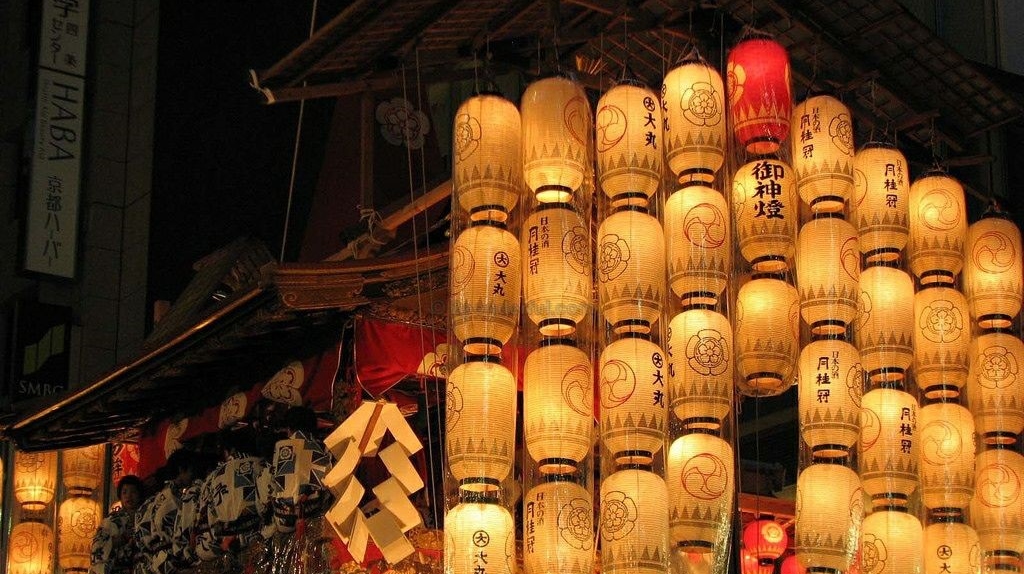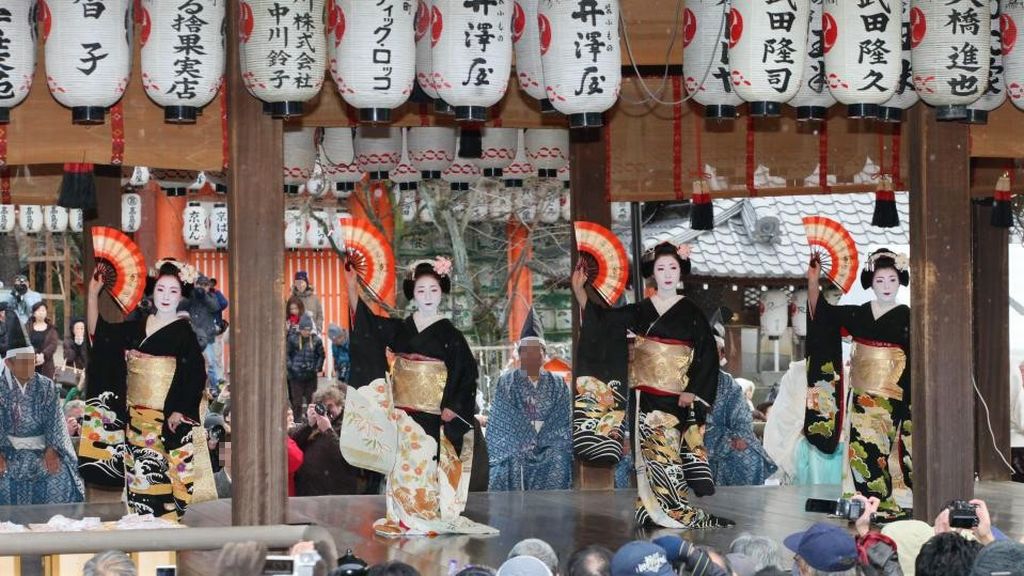A shrine with a famous landmark of its welcoming vermilion gate is home to the Gion matsuri
This colourful shrine is considered the guardian shrine of neighbouring Gion (“Gion” refers to a Buddhist guardian deity). Yasaka Shrine, also known as Gion Shrine in Higashiyama-ku, Kyoto is believed to have been built in 876.
Deities enshrined here are the god Susano-o-no-Mikoto, his consort Kushinada-hime-no-Mikoto, and their son Yahashira-no-Mikogami. Yasaka-jinja is the headquarters for around 3,000 affiliated shrines nationwide. The Main Hall, designated an Important Cultural Property by the Japanese government, is a rare building in the shinden-zukuri Yoshiki style (an architectural style used for aristocratic residences, predominant during the 9th-12th centuries). This style is also called Gion-zukuri.
This shrine is particularly popular with Japanese as a spot for the first shrine visit of the new year.
Yasaka Shrine’s vermilion two-story entrance gate with large komainu guardian lion dog statues stand by is a famous landmark of the Gion district and also a popular photo spot among tourists.
You can visit the shrine after dark to enjoy the many lanterns lit up. You can also relax in natural surroundings at nearby Maruyama Park.
Address : 625 Kitagawa, Gion-machi, Higashiyama-ku, Kyoto-shi, Kyoto
Access : 10-minute walk from Gion Shijyo station on the Keihan line.
Bus : From JR Kyoto station, Kyoto city bus No.100 and 206 to Gion Stop
Hours : 9:00 to 17:00 (grounds open 24hours)
Admission : Fee (Free in the shrine precincts)
Benefit : Keep evil away, Luck boosting,
Events

Gion-Matsuri Festival
The Gion-Matsuri festival, familiarly known as “Gion-san” is a festival of Yasaka Shrine.
During the Heian period (794-1185), Kyoto suffered a series of natural disasters and plagues. As a form of appeasement to Mother Nature, a thousand years ago during a famine, purification ceremonies called “gouy-e” came into practice. Traditional spears were gathered from all over Japan as well as portable mikoshi (shrines) and offered to pay respect to the gods. One of the first of these ceremonies, Gion Matsuri, was held in the early Heian period at a time of devastating plagues.
The highlight of the modern festival is the “Yamaboko Junko” parade. The Yamaboko, or giant wooden floats, are assembled without nails in the traditional Japanese way. These towering floats are so massive that they require more than 40 men to pull them through the narrow, winding streets of Kyoto. Each float is considered to be a moveable museum of history.
Date : Every year July 1st-31st

Setsubun Festival with Geisha
Yasaka Shrine’s setsubun festival features Geisha. Geisha will perform dance and bean-throwing ceremony.